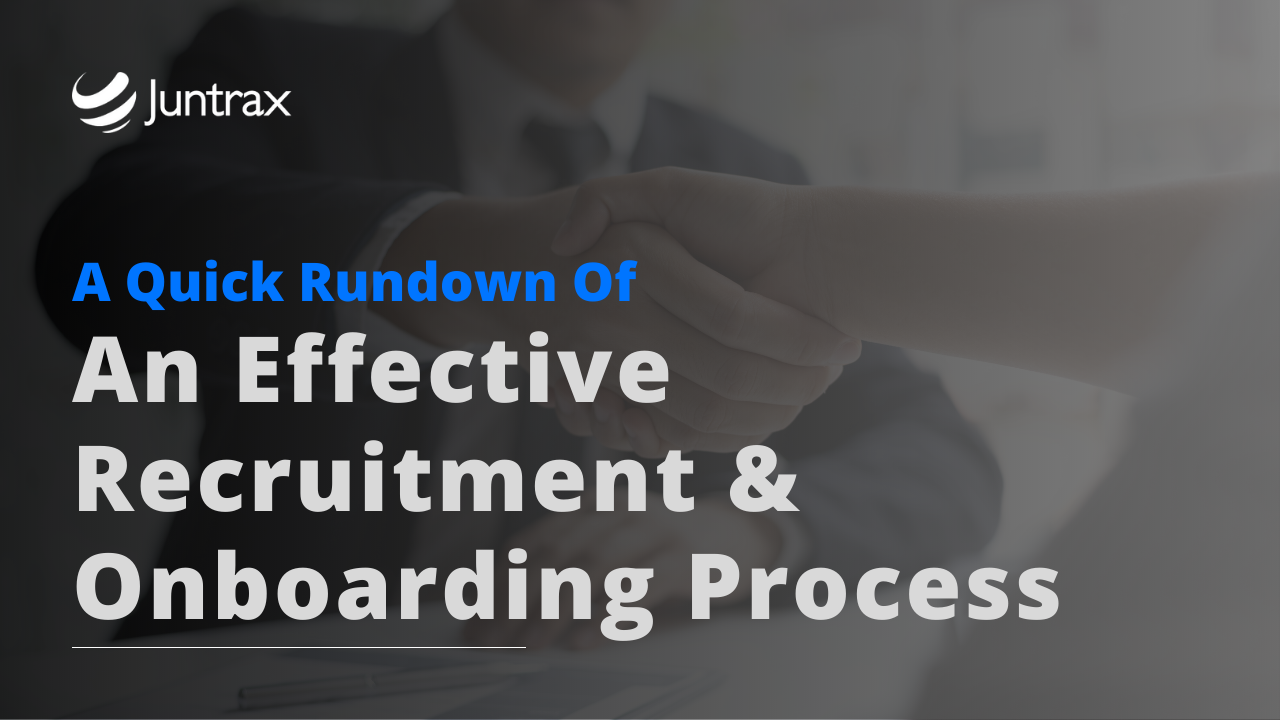A Quick Rundown Of An Effective Recruitment & Onboarding Process

Right after the completion of academics, one kicks off his/her professional career by applying for jobs. With diligence, they succeed in bagging a job as well. But that sheer happiness tends to miss from their face. Here’s why-
According to a recent survey, 83% of applicants were left with terrible memories, like being ghosted, dealing with prejudice, or unfriendly hiring supervisors. This thereafter has left approximately 75% of employees with the thought of resigning from their jobs.

Although the Recruitment process is essential for maximizing employee strength, it has undergone seismic change, particularly since Covid-19. To attract brilliant talent and take the business to the summit of success, it is important for the organization to have a solid recruitment strategy. Wondering how to set the seal on an effortless recruitment and onboarding process and what are its benefits? Here’s a quick rundown of how you can design a successful recruitment process in a few simple steps alongside retaining top talent.
What Is the Recruitment Process in HR?
First and foremost, let’s learn about the recruitment process in HRMS.
Finding, enticing, and choosing a new employee to fill a position in an organization comprise the whole process of recruiting. The recruiting manager, and other team members, such as the financial team and executive leaders, normally work together to lead this process.
A successful recruitment process entails meticulous evaluation to ensure talent management. It requires succession planning so that everyone involved can access the equipment and materials needed to execute the plan properly. The following stages typically occur throughout the hiring process:
- Identifying the applicant who perfectly fits the position in terms of abilities, experience, and personality
- Gathering and evaluating resumes
- Conducting interviews for jobs
- Choosing the new employee
- Beginning of the onboarding procedure
Four stunning strategies for Successful Recruitment and Onboarding
Now that you’re familiar with what a good recruitment process entails, let’s dive right into the strategies that you can implement to make it a systematic affair.
Exhibit your Company’s Mission and Core Principles
The recruitment and onboarding process is double-edged. Just as candidates devote time to impress prospective directors by sketching out their talents and experience, your company should also do the same by outlining ‘why’ individuals should work for you.
In the current times when everything is available in just a click, it’s significant to build employee engagement by ensuring that your company’s mission and values are prominently displayed and communicated on your social media pages and undoubtedly on your website. This includes internal diversity statistics, accolades they have received so far, and several opportunities to enlighten candidates about their career options.
Publicize on social media
The recruiting industry is still very much active on social media. You should broaden your audience reach by publishing items on social media in addition to promoting your primary website. You can also build specific recruitment social media accounts. This gives applicants a better idea of upcoming projects that they might be working on if they are selected and also gives them confidence that their engineering team is a leader in the sector.
Invest in HR Software
To meet your automation demands to the fullest, use HR Software to capture the applicant details and streamline the onboarding process with the Human Resource administrator. This would enable the HR admin to convert the applicant into an employee within minutes. You’ll be able to track the number of applicants, automate where you publish job postings, and also filter resumes to find the best candidates. The shortlisted candidates can next be phone screened to see whether they are qualified for in-person interviews. You may spend more time learning about potential candidates if you spend less time on these administrative responsibilities.
Establish a program for employee referrals
For increased employee engagement, establish an employee referral program that would make them more eager to circulate the job poster and are likely to introduce you to more qualified applicants. A Columbia University study found that an employee referral program produced 70% more quality recruits than other methods.
Nonetheless, it’s crucial to encourage or honor reliable recommendations. According to the same study, “strong connections,” were nearly three times more plausible to “result in a good hire” than online referrals.
The benefits of an effective recruitment and onboarding process
Apart from aiding the company to surpass recruiting challenges, having a successful recruitment procedure has several advantages. They are as follows:
Conserves Time
An efficient hiring procedure exhibits the professionalism of your business, helps to trim down the time and resources needed to find, attract, engage, screen, interview, hire, and retain good talent. Hiring an unworthy candidate could result in a wastage of your time and the effort you had put into training them. The road map to success for your business is laid out for you as soon as you find the correct fit.
Boosts employee productivity
Human Resource Professionals can devote their efforts to onboarding new staff by using a thorough recruitment procedure. When the entire emphasis is on learning and development, staff productivity increases alongside fostering employee engagement and performance.
Conclusion
Consider applying this comprehensive viewpoint to your recruitment and onboarding process to provide candidates with a positive, unified experience from beginning to end. High-quality candidates become long-term workers when you incorporate this level of consistency into your hiring procedure.